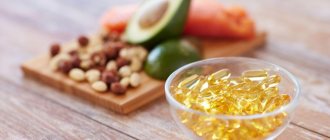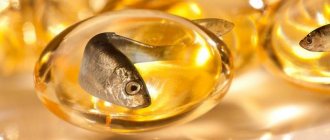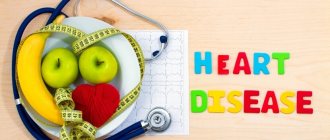December 18, 2021 October 26, 2021
The evidence for the benefits of omega-3 fatty acids is growing every year. Thus, recently, employees of the Faculty of Pharmacy at the University of the Basque Country discovered that omega-3 PUFAs can help with Parkinson’s disease 1, and a team of scientists from Korean universities has proven the effectiveness of acids of this class in the prevention of gastrointestinal cancer 2.
Where can a person get these important substances, what products contain them, and do they all have the same value?
What omega-3-PUFAs are there?
Today there are 11 known omega-3 polyunsaturated fatty acids. 3 of them are indispensable for humans. The remaining 8 are found in food and may have biological effects, but do not play a major role.
The three important omega-3 PUFAs have their own gradation. The simplest of these is alpha-linolenic acid (ALA). In itself, it is not of fundamental importance for health. Its main advantage is that from it the human body is able to synthesize two other omega-3-polyunsaturated fatty acids: eicosapentaenoic acid (EPA) and docosahexaenoic acid (DHA). The processing efficiency is extremely low: on average, only about 5% of ALA is converted into EPA and 0.5% into DHA.
It is EPA and DHA that give omega-3 polyunsaturated fatty acids their health benefits. This reduces the risk of cardiovascular diseases, helps with depression, and has a positive effect on vision. The recommended intake of these acids for an adult is 2 g per day.
An article about why omega-3 PUFAs are especially important for women.
Thus, the question “What do omega 3-PUFAs contain?” it is appropriate to consider separately for each of the three significant acids: ALA, EPA and DHA.
Functions in the human body
Omega-3s literally help maintain and increase health, as they:
- They take part in the synthesis of eicosanoids (tissue hormones), which regulate intracellular metabolism.
- Reduce the risk of heart attack and stroke by lowering blood cholesterol levels.
- They are an important component of the tissues of the nervous system.
- Take part in the formation of sperm.
- They regulate the production of many hormones, including testosterone.
- They help cope with psycho-emotional overloads and prevent the development of depressive states.
- They prevent the occurrence of allergies and the development of autoimmune processes due to their anti-inflammatory properties.
- Improves memory and attention.
- Have a beneficial effect on the condition of the skin.
- Reduces the level of stress hormone cortisol.
In addition to all of the above, omega-3s are needed by everyone who wants to lose weight and is actively involved in sports: they promote fat burning and help build lean muscle mass. Fatty acids of this class are also useful for patients with chronic arthritis and arthrosis, as they improve the elasticity of joints.
What foods contain the omega-3 PUFA alpha-linoleic acid?
There are a number of plant foods that contain large amounts of ALA. These are nuts (especially walnuts), soy, flax and chia seeds. The ALA concentration in Brussels sprouts is slightly lower, but this vegetable is easily accessible and well suited for the daily diet. In addition to ALA, the foods listed are rich in fiber and minerals.
Some types of vegetable oils can also boast high levels of ALA: flaxseed, mustard, perilla. They should be used when preparing cold dishes, for example, added to salads or sauces. When heated, omega-3 PUFAs are destroyed, so frying in such vegetable oils is not recommended.
However, due to the low efficiency of converting ALA into EPA and DHA, these products are not able to provide the recommended daily intake of omega-3 PUFAs. Walnuts, flaxseed and others can only be considered as an addition to the diet.
Processed fish oil
In most cases, the consumer is offered processed fish oil, which is packaged in capsules that are popular with consumers. Let's figure out what kind of form this is.
During the manufacturing process, the three types of fatty acids (saturated, monounsaturated or polyunsaturated) in the triglyceride are released from the glycerol and added to the ethyl alcohol to become ethyl ester (EE) fatty acids. Producing a form of EE is a necessary first step. Conversion to the EE form allows the separation of Omega-3 fatty acids from saturated and monounsaturated fatty acids without damaging the Omega-3s. At this point, the EE (EPA, DHA or DPA) can be molecularly distilled, concentrated to the desired level, delicately purified and encapsulated, or it can be further converted back into rTG.
To make rTG fish oil, Omega-3 EE fatty acids are enzymatically re-added to a vegetable glycerol molecule in a process called re-esterification (rTG), and then distilled, concentrated, purified and encapsulated. Note that not all fatty acids are reattached as triglycerides: according to the European Pharmacopoeia, rTG must contain at least 60% triglycerides; the rest are diglycerides and monoglycerides. Therefore, it cannot be said that the TG and rTG forms are the same.
These rTG oils are the most expensive among medical grade fish oil supplements and represent only a small percentage of the market. The cost of such a product cannot be less than $40 for 80-120 capsules. This is because the double distillation process of fish oil is very complex and costly.
Most manufacturers use enteric coating during capsule production.
The enteric coating prevents the capsule from dissolving until it reaches the small intestine. But, unfortunately, unscrupulous manufacturers can mask the unpleasant smell of rancid fish oil in capsules.
Accordingly, if you take Omega-3 capsules, you should open the capsule from time to time to make sure that the fish oil has not deteriorated.
Which foods contain omega-3 PUFAs eicosapentaenoic and docosahexaenoic acids?
EPA and DHA go hand in hand and are found in the same foods. These are seafood: fish and their caviar, shellfish. It is curious that the fish itself does not synthesize omega-3 PUFAs, but obtains them from underwater vegetation. We can do the same by eating seaweed that is edible for humans - for example, chuka or seaweed.
If you consume a portion of mackerel, salmon, herring, oysters several times a week, you can completely solve the problem of a lack of omega-3 PUFAs in the body. Seafood is also rich in selenium and B vitamins.
Omega fatty acid dossier
Omegas are polyunsaturated fatty acids. They give the cell flexibility so that it can allow hormones, vitamins and minerals to pass through.
There are about 30 different polyunsaturated fatty acids. They are combined into 3 Omega groups: 3, 6 and 9. Their main difference from each other is their chemical composition and form. This affects their functions in the body.
Omega-3
The most necessary for the body. Most often we miss it. The body does not produce it itself. Its level depends on what we eat.
Benefits of Omega-3:
- supports vascular and heart health by increasing “good” HDL cholesterol and decreasing “bad” LDL cholesterol
- maintains skin elasticity and beauty
- reduces inflammation
- accelerates muscle recovery
- increases energy
- reduces anger
- improves mood and memory
- increases the sensitivity of cells to insulin, thereby stabilizing blood sugar levels
- stimulates the immune system. Omega-3 is part of the protective layer of the cell against the invasion of viruses, increases the activity of T cells and macrophages - the main fighters against infections.
Omega-6
We consume it even more than we need. Just like Omega-3, we need it for a healthy heart and blood vessels. When there is an excess of it, the elasticity of the cell membrane rapidly decreases, it hardens, which is why it gradually collapses. This can lead to the formation of blood clots and narrowing of blood vessels. In addition, excess Omega-6 increases inflammation.
Omega-9
It comes not only from food, but is also produced in the body. Thanks to it, blood vessels and skin maintain elasticity and youth. It also reduces inflammation, increases energy, reduces anger and improves mood. More often than not, this Omega is enough for us. After all, if we don’t eat enough of it, our body comes to the rescue and produces as much as it needs.
Omega Sources
Omega-3 - fatty fish, especially mackerel, sardine, herring, coho salmon, chinook salmon, chum salmon, pink salmon, sockeye salmon, salmon, anchovies; seaweed, fish oil, camelina, flaxseed, rapeseed oils, flax seeds, chia and walnuts.
Omega-6 - sunflower, palm, grape oils, tofu, seeds, peanuts, almonds, cashews, sesame.
Omega-9 - olives, avocados, olive oil, pistachios, hazelnuts, cashews, Brazil nuts, almonds.
What to do to ensure you have enough Omega-3 every day
The daily intake of Omega-3 is 500 mg.
To get it, you need to eat at least 25 grams of mackerel or 40 grams of herring. Eating this way every day can be problematic.
It is more logical to eat fish 2 times a week, for example, once you eat a 200 gram portion of chum salmon, and the second time - a 250 gram portion of pink salmon. In total, you get your weekly Omega-3 intake.
Supplement your lunch with 30 grams of walnuts, season the salad with flaxseed or camelina oil.
These foods will not only help maintain your Omega-3 levels. These are excellent sources of calcium, phosphorus, vitamin D and easily digestible protein.
Make it a habit to eat oily fish 2 times a week. If you haven't eaten it in a particular week, just take a few Omega-3 capsules.
Why Lab4U does not recommend taking Omega 6
It is not easy to eat fish every day or at least 2 times a week. Therefore, many people lack Omega-3. At the same time, we receive Omega-6 in excess every day.
Our task: increase Omega-3 and reduce Omega-6 consumption.
When you get too much Omega-6, Omega-3 is poorly absorbed. This occurs due to competition for enzymes, whose task is to sort Omega into shelves and deliver it to cells.
It is good for the body when the ratio of Omega-3 to Omega-6 is no more than 1 to 4.
If the ratio is higher, the risks of cancer, asthma, autoimmune diseases, obesity, depression, ischemia, cellular damage and early aging increase. Cells will begin to transmit electrical signals more slowly and you will begin to freeze, like Windows XP. Words are more difficult to choose, movements and reactions slow down.
If, according to test results, the ratio of Omega-6 to Omega-3 is more than 4 to 1, for example, 6 to 1, review your diet, add fatty fish to your diet, Omega-3 supplements, replace sunflower oil with flaxseed, camelina or olive oil, they contain less Omega-6.
Table of Omega-3 acids content in 3 products
Data on the amount of essential omega-3 PUFAs in popular foods are shown in the table.
| Product | What acid does it contain? | Content per 100 g of product, mg | Additionally |
| Mackerel | EPA+DHA | 5 134 | 100 g of mackerel contains 200% of the daily value of vitamin B12 and 100% of selenium |
| Salmon | EPA+DHA | 2 260 | Contains high-quality protein, large amounts of magnesium, potassium, selenium and B vitamins |
| Herring | EPA+DHA | 1 729 | 100 g of herring contains 400% of the daily value of vitamin D, 200% of vitamin B12 and 50% of selenium |
| Oysters | EPA+DHA | 672 | Oysters contain more zinc than any other food - 600% of the daily value per 100 g, as well as 200% copper and 300% vitamin B12 |
| Sardines | EPA+DHA | 1 480 | 100 g of sardines contain 150% of the daily value of vitamin B12 and 75% of selenium |
| Tuna | EPA+DHA | 1 664 | 100 g of tuna contains 180% of the daily value of vitamin B12 and 65% of selenium |
| Anchovies | EPA+DHA | 2 113 | Product rich in vitamin B3, selenium and calcium |
| Red and black caviar | EPA+DHA | 6 789 | High content of vitamins B4 and B12 |
| Flax-seed | ALC | 2 2813 | Very rich in fiber, vitamin E, magnesium |
| Chia seeds | ALC | 17 552 | High level of minerals: calcium, manganese, phosphorus |
| Walnuts | ALC | 9 079 | Contains a lot of fiber, copper, manganese, vitamin E |
| Soya beans | ALC | 1 443 | Source of potassium, magnesium and vitamins B2, B9, K |
| Brussels sprouts | ALC | 173 | Source of vitamins C and K |
Contraindications
The food supplement is contraindicated in the following cases:
- Allergic reactions to seafood.
- Children under 3 years old.
- Individual intolerance to substances included in the drug.
- Tuberculosis of any form.
- Liver and kidney diseases.
- Tendency to develop hemorrhagic syndrome.
- Excess vitamin D in the body.
- Various pathologies of the gastrointestinal tract in the acute or chronic period.
- Postoperative time.











